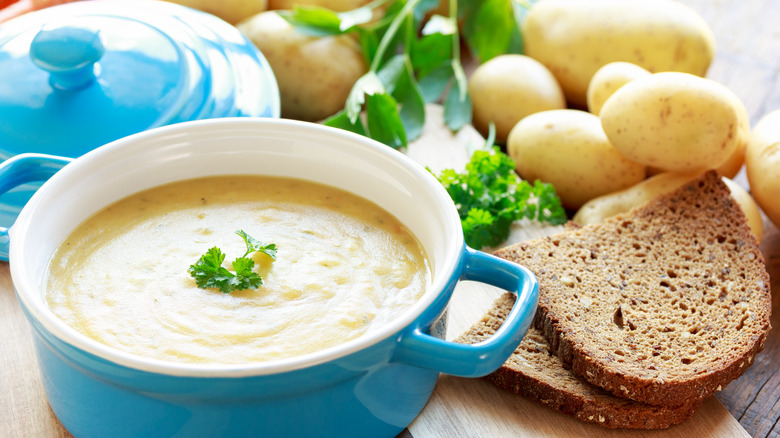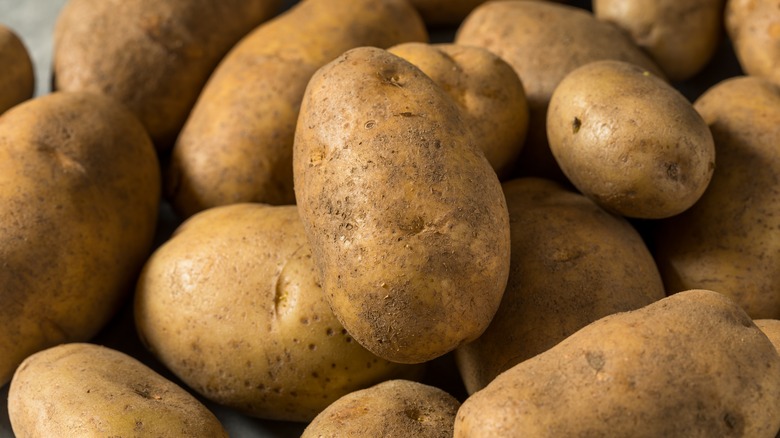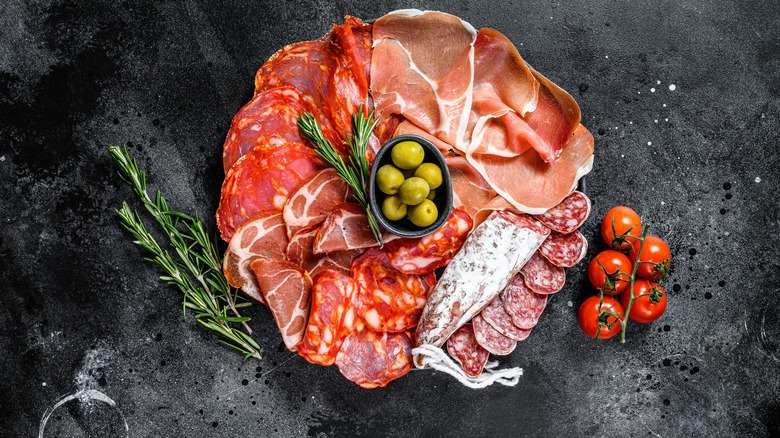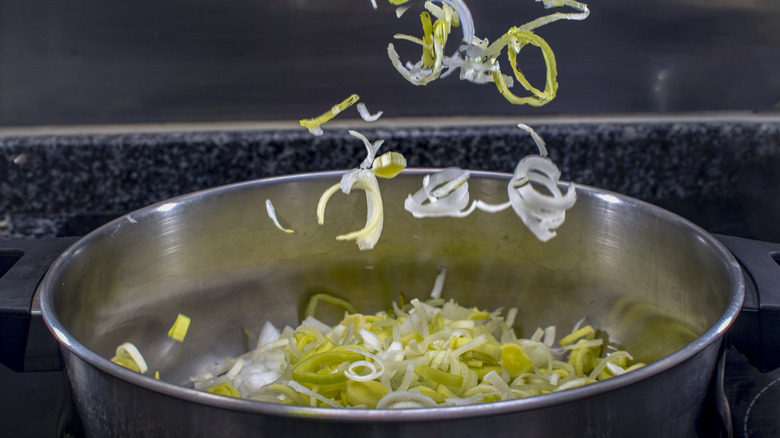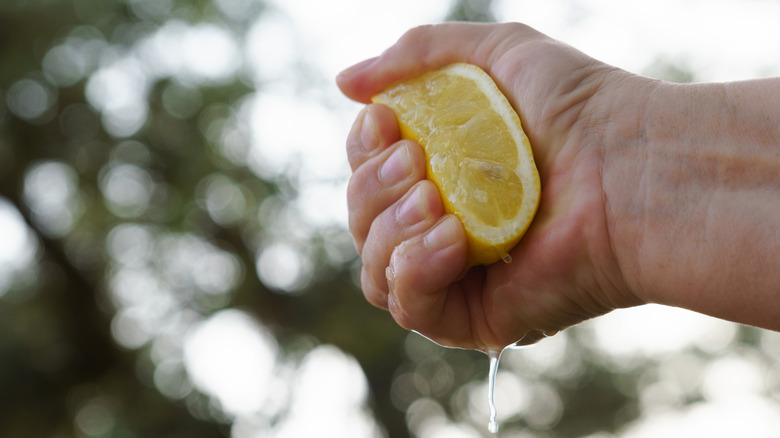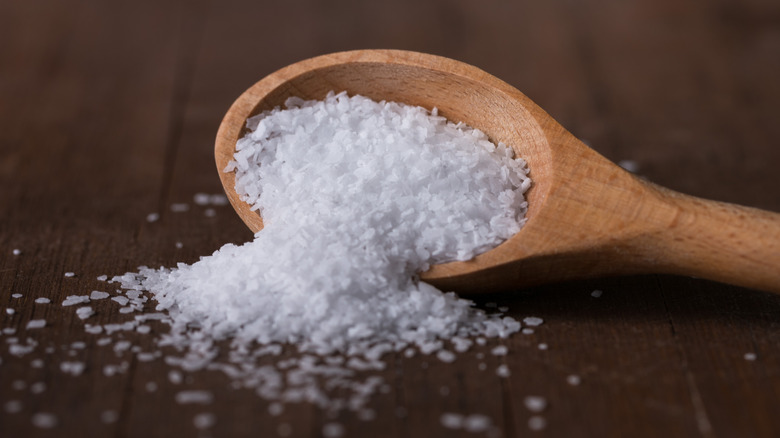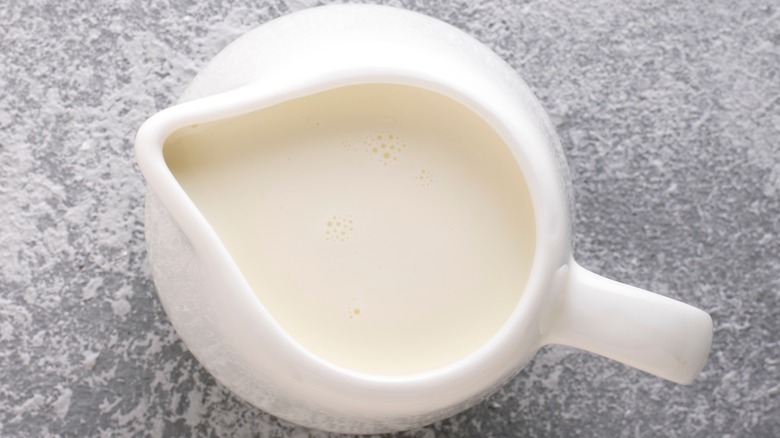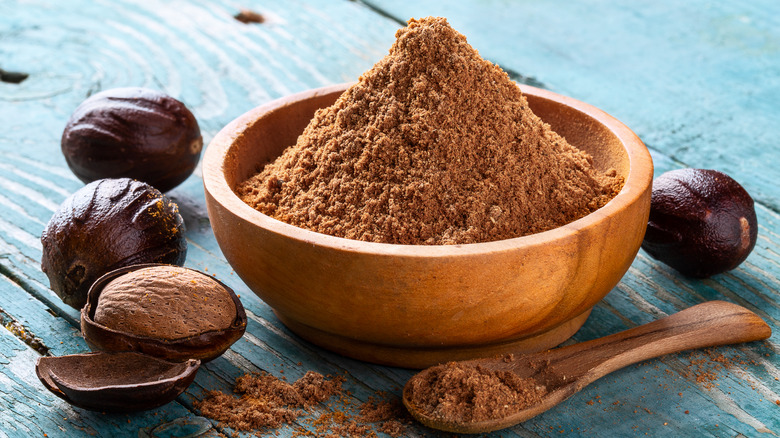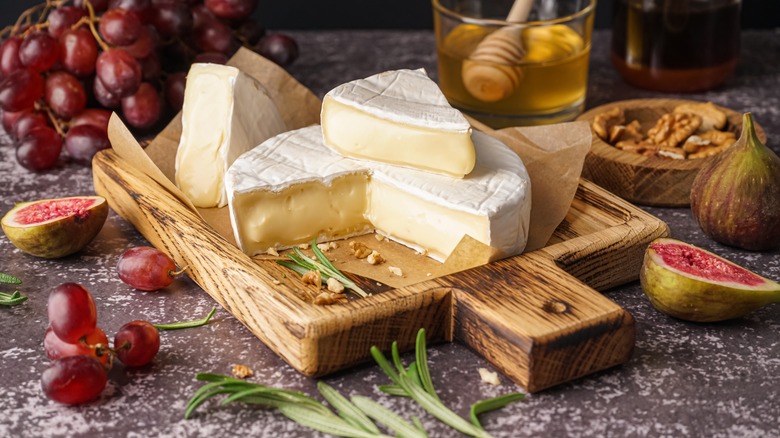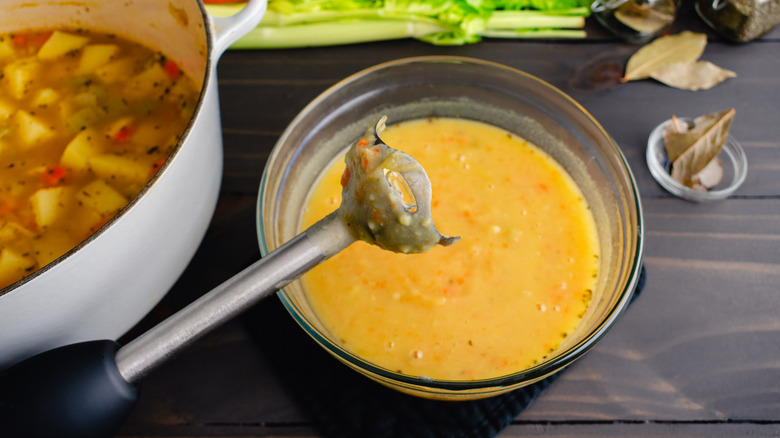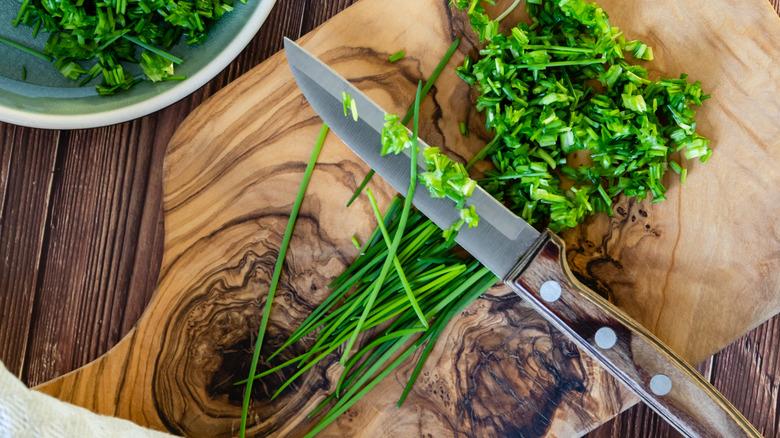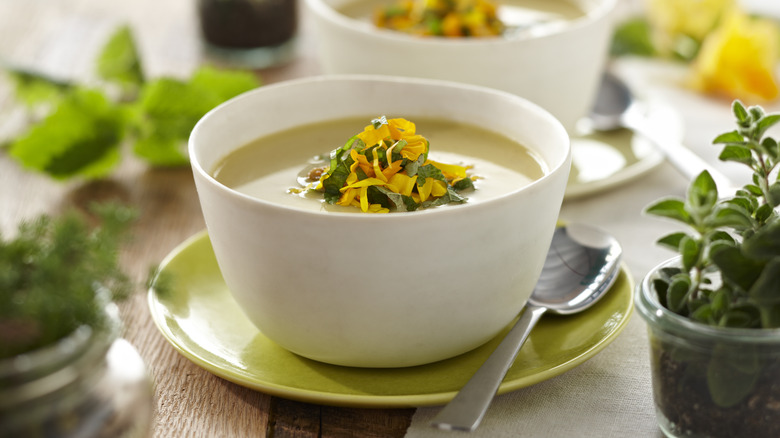11 Ways To Upgrade Your Potato Soup Like A Pro
Ah, the humble potato soup. It is a good meal option when the pantry is bare because it requires so few ingredients and you likely have them. Taking potato soup to the next level isn't hard or complicated. It requires small tweaks and additions that will elevate an ordinary potato soup to extraordinary. We asked four experts how to upgrade a simple homemade potato soup.
We turned to Gill Boyd, chef-instructor of culinary arts at the Institute of Culinary Education in New York, for all the classic takes on potato soup and how to get it right. For a health kick, private chef and culinary nutrition consultant (and Food Network "Chopped" champion) Julia Chebotar shares her wisdom (she cheekily adds sweet potato — and we love that). Because the potato features so prominently in Irish heritage, we asked Mairead Geary to weigh in. She shares Irish recipes adapted for cooking success in America via Irish American Mom. And finally, for a contemporary vegetarian take, we spoke to Jeanine Donofrio of the veggie-forward blog, Love and Lemons (she has about 80 soup recipes on her site). If you're tackling potato soup this season, do follow their advice and take it from standard to sensational.
Choose the right potatoes
Potato soup is a simple dish. But simple can be delicious. When making unfussy food the quality of your ingredients becomes the hero of the dish. With potato soup, the potatoes influence the flavor and texture of your dish, so not any old potatoes will do. "I like to use Yukon Gold potatoes or other yellow potatoes in soup," says Jeanine Donofrio of the vegetarian blog, Love and Lemons. "They have a nice buttery flavor and become creamy, not gummy, when blended."
Gill Boyd, chef-instructor of culinary arts at the Institute of Culinary Education vouches for different potatoes for a variety of consistencies: "If you're making a brothy potato soup or chunky one with vegetables, use waxy potatoes like red bliss or Yukon Gold as they hold up better. If you are making a puréed soup or one with a creamy texture, use russets because their starchiness works better for processing into a mash consistency." Private chef and culinary nutrition consultant Julia Chebotar recommends using organic potatoes and mixing Yukon Gold and sweet potatoes for added nutrition and flavor.
Take inspiration from these cultures
Giving a potato soup a cultural accent upgrades it from a bland traditional one by adding unique layers of flavor through a variety of ingredients. The French and Irish come to mind when thinking of potato soup. "Potatoes hold a significant place in Irish history and cuisine. For centuries the Irish people depended on the potato as their primary source of nutrition. When the potato crop failed in 1845 a devastating famine ensued that led to a mass migration of Irish people to America," explains Mairead Geary, of Irish American Mom. You can view her traditional Irish potato soup recipe for tips on how to make it authentic. For a French twist on your potato soup, Gill Boyd recommends a Potage Parmentier. Leeks are the magical ingredient in this dish, and they pair incredibly well with potatoes.
Inspired by Spain, Health Chef Julia Chebotar recommends adding chorizo and smoked paprika to potato soup. "It gives the soup a rich, smoky flavor," she says. Alternatively, she advises adding a touch of Indian spices like cumin, coriander, coconut, and turmeric to "give the soup a warm, exotic twist."
Technique! Technique! Technique!
Technique or lack thereof can affect the outcome of a potato soup. Private chef and culinary nutrition consultant Julia Chebotar swears by sautéing your vegetables: "It's important to sauté the vegetables first to build a flavor base. Carrots, celery, and onions are always key! Always deglaze the pot with a bit of broth or wine to lift those flavorful browned bits."
Gill Boyd who has over 30 years of experience as a chef-instructor at the Institute of Culinary Education in New York adds that onions, celery, and garlic provide a good base flavor for potato soup, but warns to not over cook your potatoes. "Don't over boil potatoes before puréeing, as they will get mealy or soggy. Simmer potatoes until they are fork tender and then you can process them." If you've puréed your soup and it's too thick, Boyd recommends adjusting the liquid or cream (adding more) instead of serving it as is.
Add acid to cut through the starch
Have you watched the Netflix cooking series, "Salt Fat Acid Heat?" It follows chef and food writer Samin Nosrat as she travels around the world exploring the four elements she believes are needed for successful cooking. With that in mind, where is the acid in a potato soup? Jeanine Donofrio of Love and Lemons suggests adding lemon to potato soup. "It's not traditional, but I like to add an acid to potato soup. Tangy white wine vinegar or lemon juice (or both) can cut through the starchy potatoes, making the soup taste brighter, more balanced, and more complex. A little Dijon mustard is great in potato soup too. It adds a peppery, savory depth," she says.
Private chef and culinary nutrition consultant Julia Chebotar is a fan of lemon too. She recommends adding a squeeze right at the end. Did you know adding lemon pulp to a starch dish can reduce blood sugar levels by slowing down the digestion of sugar and starches? Lemon also counteracts the creaminess of a dish. Just make sure you've got your ratios right so the cream doesn't curdle.
Add a small mountain of salt
Add salt. Potatoes are a plain ingredient. They have a flavor ... potato ... but they're open to being exploited by other flavors and salt will help accentuate this. Because salt reduces water in food, it increases the concentration of flavors. "Potatoes require a lot of seasoning," explains vegetarian blogger Jeanine Donofrio. "Make sure you add salt to your soup at every stage of the cooking process — a little with the aromatic vegetables at the beginning, a little with the potatoes and broth, and more at the end to taste. An extra pinch of salt can be the difference between a good potato soup and a great one."
Gill Boyd from the Institute of Culinary Education agrees. He says a common mistake home cooks make with potato soup is not adding enough salt. He suggests adding salt after the soup has simmered for at least 20 minutes: "That way the flavors can meld together and you can season and taste before serving."
Make it creamier
Making it creamier means adding cream. Mairead Geary of Irish American Mom recommends adding some heavy whipping cream after blending the soup for a luxurious, rich texture. But there is more than one way to make a potato soup creamy.
"One of my fondest memories is making potato soup with my grandmother," says Health Chef Julia Chebotar who loves potato soup for its comfort and versatility. "She had a way of turning simple ingredients into something magical, and her potato soup was always a family favorite. It was creamy, hearty, and filled with love." Instead of heavy cream she recommends using coconut milk or cashew cream to keep it dairy-free but still luscious.
Meanwhile, blogger Jeanine Donofrio adds white beans to potato soup. "You can't taste them, but they enhance the creaminess of the potatoes while adding some extra protein," she says. "Cauliflower is another fun addition to potato soup because, like the beans, it becomes super creamy when blended."
Add these herbs or spices to enhance flavor
It's time to enhance your mediocre potato soup from zero to hero. Explore the spice rack or venture into the herb garden and see what is available. While the soup is simmering, private chef and culinary nutrition consultant Julia Chebotar suggests adding a combination of fresh thyme, rosemary, and a bay leaf to the pot. "A pinch of nutmeg can also add a warm, earthy flavor," she says. Chef Gill Boyd also favors nutmeg with potato soup: "For spices, I like to use paprika, nutmeg, cayenne, and cardamom. For herbs, try fresh thyme, rosemary, sage, and chives."
Smoked paprika is back on the home cook's spice rack, and for good reason. It adds a deep, smoky, and slightly sweet flavor to dishes without overwhelming the other ingredients. It has a unique taste, so pair it appropriately. In this case (with potato soup) it works. "I love to use smoked paprika," Jeanine Donofrio of Love and Lemons explains. "It gives vegetarian potato soup the rich, smoky flavor that bacon adds to many traditional recipes."
Add a side dish
Bringing a bowl of soup to the dining room table without a side is a little underwhelming. Soup needs an accompaniment. Our go-to is bread. If you're going with an Irish potato soup, Mairead Geary of Irish American Mom suggests serving it like they do in Ireland — with a side of Irish brown bread or a whole-wheat soda bread. It's called soda bread because it's made with baking soda.
Potato soup is a rich and dense soup. Health Chef Julia Chebotar suggests a fresh side salad to balance the creaminess of the soup. "I'd serve potato soup with a side of crispy salad with a zesty vinaigrette. A simple arugula salad with green apple, lemon, and olive oil would be perfect." The bold green of the salad will contrast beautifully with the pale soup. "You can't go wrong with a classic, like toasted bread and pretty much any cheese," recommends chef Gill Boyd and we couldn't agree more. To take it to the next level, thinly slice some bread (like ciabatta) and lightly toast it under the grill. Serve it on a wooden board with camembert, gorgonzola and a cheese knife.
Blend it baby!
Potato soup is traditionally a puréed soup (like butternut soup). In New York at the Institute of Culinary Education, Gill Boyd teaches his students how to make a classic French version of potato soup called Potage Parmentier. (In Julia Child's book "Mastering the Art of French Cooking (Vol. 1)" her first recipe is Potage Parmentier). "It is a puréed soup, meaning the potatoes are the thickening agent for the soup," the chef-instructor explains of the leek and potato soup. It's also the texture he prefers: "You can always add other items or garnishes like cheese, or fresh herbs for flavor and texture."
In fall and winter, blogger Jeanine Donofrio is always looking for soup recipes that can pass for dinner. She favors potato soup because the potatoes are substantial enough that it can be a meal on its own. "Blending the potatoes creates this amazing creamy texture," she explains. Use a stick blender directly into the pot to save on dishes. Or, opt for the more powerful jug blender if you want the sought-after smooth and silky texture.
These garnishes will up-level your potato soup
Since potato soup is traditionally puréed, garnishes can amplify the texture of the dish. Some of the top expert suggestions for garnishes that add crunch and taste are drumroll ... crispy bacon, roasted chickpeas, or toasted seeds.
Jeanine Donofrio of Love and Lemons tops potato soup with a sprinkle of chives: "They add an appealing pop of color to what's generally a beige soup, and their fresh, savory flavor contrasts nicely with its richness." Parsley is another suggestion. "Chop fresh flat-leaf or curly parsley and sprinkle it over the top just before serving. This will add a burst of freshness and a touch of elegance to your dish," explains Irish American Mom's Mairead Geary. She says parsley garnishes are primarily used when dining out at a restaurant in Ireland. At an Irish Nana's house a simpler presentation could be expected. "A swirl of fresh cream or a little grated cheddar cheese are the more common toppings of choice," explains Geary. Other grated cheese options the experts recommend are Parmesan or Gruyère.
Here is how to plate it like a pro
Think about the bowl, and the garnishes — and use the right tools for the job. That's the opinion of the experts. "When plating, use a wide, shallow bowl to allow for creative garnishing and a more elegant presentation," suggests Food Network "Chopped" champion Julia Chebotar. "For the garnish, a swirl of cashew cream or coconut milk on top adds a lovely visual appeal. Or a swirl of hot honey sauce!"
Chef-instructor Gill Boyd of the Institute of Culinary Education recommends a drizzle or swirl of parsley purée, "which adds color," or heavy cream that contrasts the white from the off-white color of the soup. If it's less fuss you're after, add a dash of his recommended spices on top, like paprika, curry powder, or cayenne.
When Mashed spoke to Brandon Skier, a social media influencer and former line cook, about using the right tools for plating he suggested the microplane and sauce bottles. The microplane (mini grater) gives "a fluffy effect" to grated ingredients. Use this if adding nutmeg to the plated soup. "Nothing is worse than plating something nicely and going for a drizzle of oil and a huge glug goes all over the plate," says Skier. Keep that in mind for a last-minute swirl of olive oil, coconut milk, or parsley purée.
